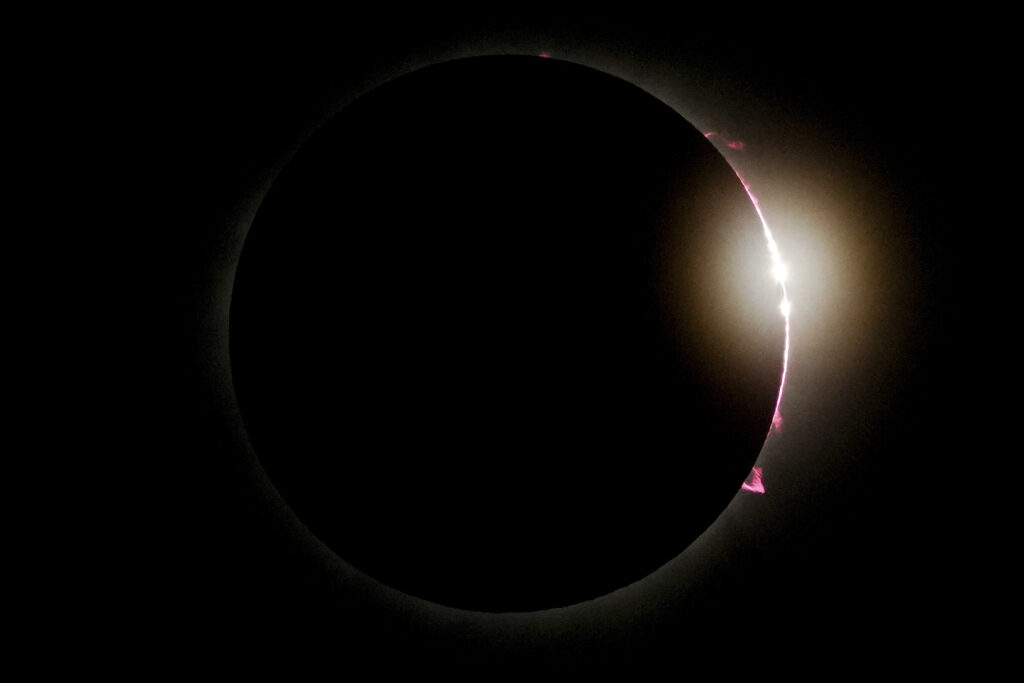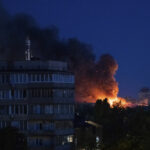The moon’s shadow has moved into the U.S. with cloudy skies in store for a part of the total eclipse path from Texas to Maine. The eclipse cuts through major cities including Dallas; Austin, Texas; Indianapolis; Cleveland; and Niagara Falls, New York.
Quick Read
- The moon’s shadow has entered the U.S., with some areas along the total eclipse path from Texas to Maine experiencing cloudy skies.
- The eclipse’s path includes major cities like Dallas, Austin, Indianapolis, Cleveland, and Niagara Falls.
- In Dallas, students at D.A. Hulcy Middle School celebrated the eclipse with cheers and excitement, declaring themselves “new” after witnessing totality.
- In Mazatlan, Mexico, beaches darkened as the total eclipse reached its peak, with spectators capturing the moment on their phones amidst the silhouette of palm trees.
The Associated Press has the story:
Total Solar Eclipse reaches U.S. on way to Canada
Newslooks- (AP)
The moon’s shadow has moved into the U.S. with cloudy skies in store for a part of the total eclipse path from Texas to Maine. The eclipse cuts through major cities including Dallas; Austin, Texas; Indianapolis; Cleveland; and Niagara Falls, New York.
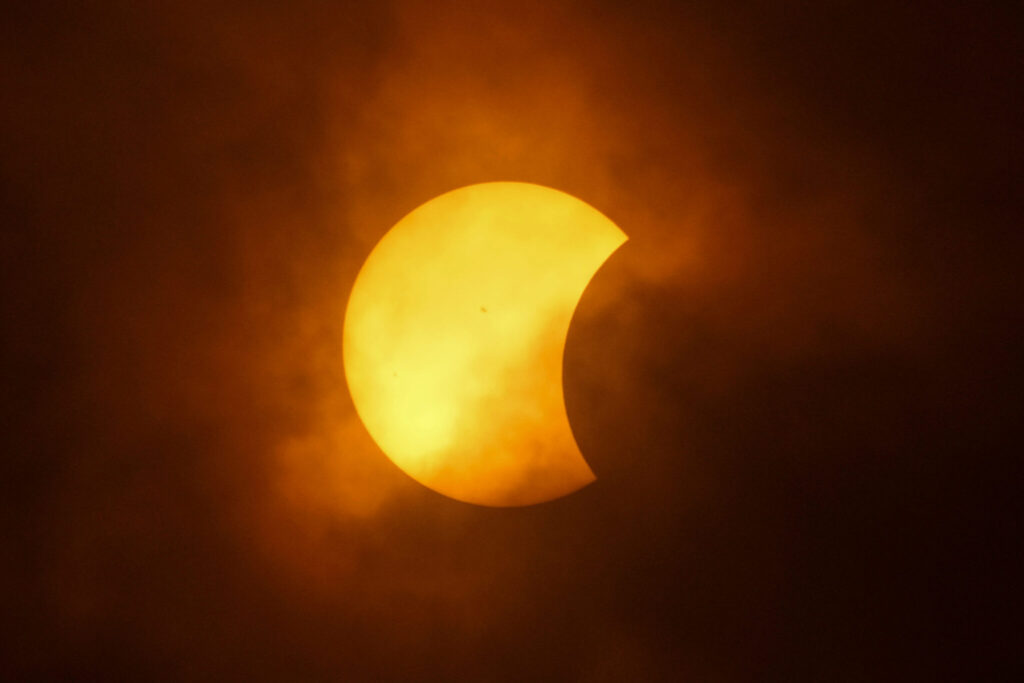
DALLAS STUDENTS ELATED BY ECLIPSE
DALLAS – Emergency lights clicked on outside D.A. Hulcy Middle School as the last sliver of the sun disappeared. Students cheered and whooped, sitting on towels and picnic blankets in an adjacent parking lot.
“I’m a new person,” eighth grader Nia Modkins said.
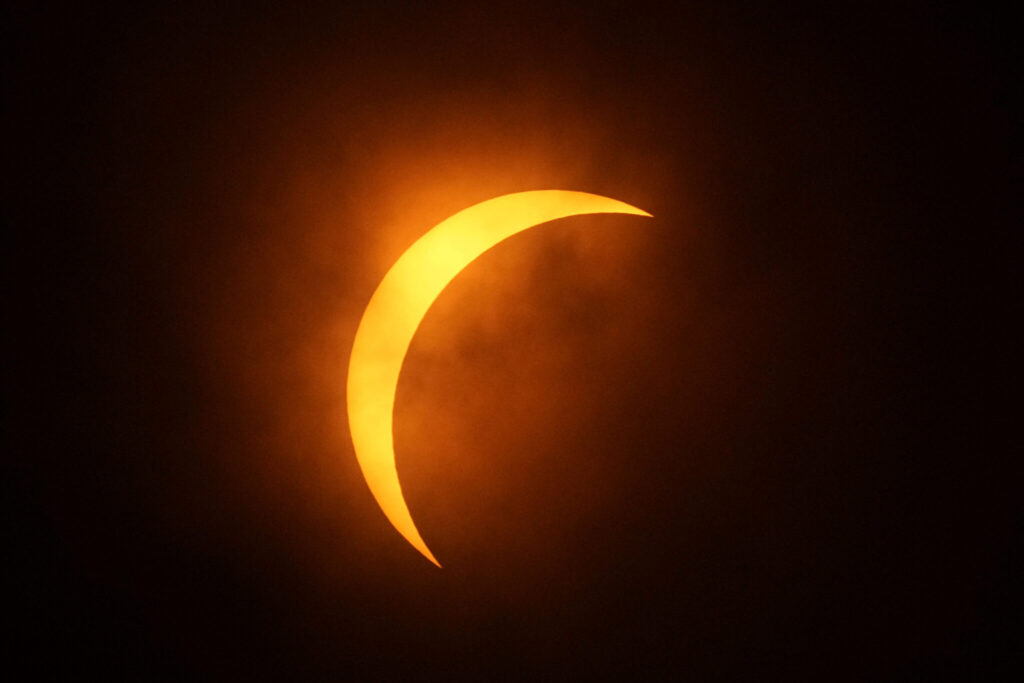
Students and teachers took off their eclipse glasses and pointed at the sky, taking pictures and videos. Once three minutes elapsed, their teachers told them to put their eclipse glasses back on as the sun prepared for its return act.
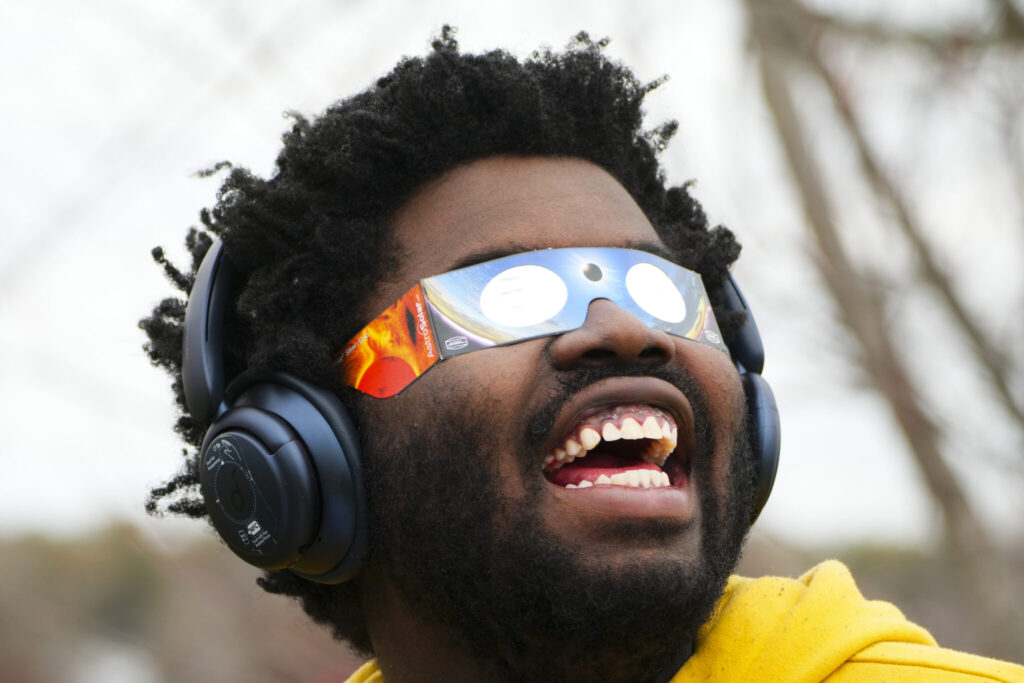
Once daylight swept over the parking lot again, eighth grader Sky Johnson swiped through her phone, looking for the video she’d taken during totality.
“Two minutes of me screaming, literally,” she said.
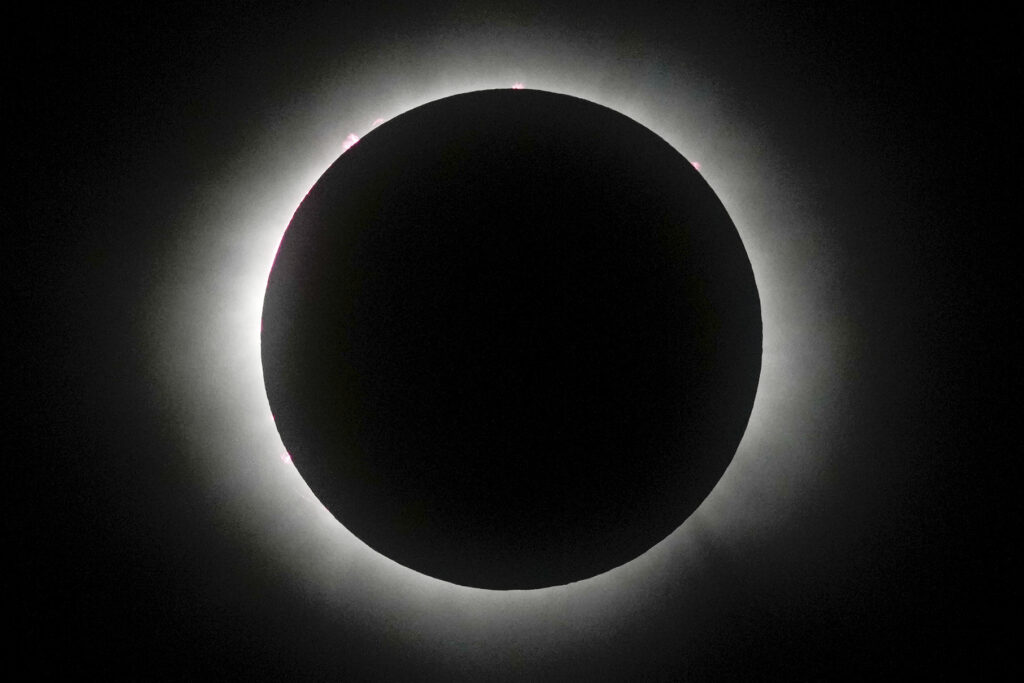
BEACHES GROW DARK IN MEXICO
MAZATLAN, Mexico – Mazatlan’s sparkling beaches have been cast into darkness as the total solar eclipse reaches its maximum coverage.
Hundreds of gathered faces were illuminated only by the screens of their cellphones as they tried to capture the slightly more than 4 minutes of totality.
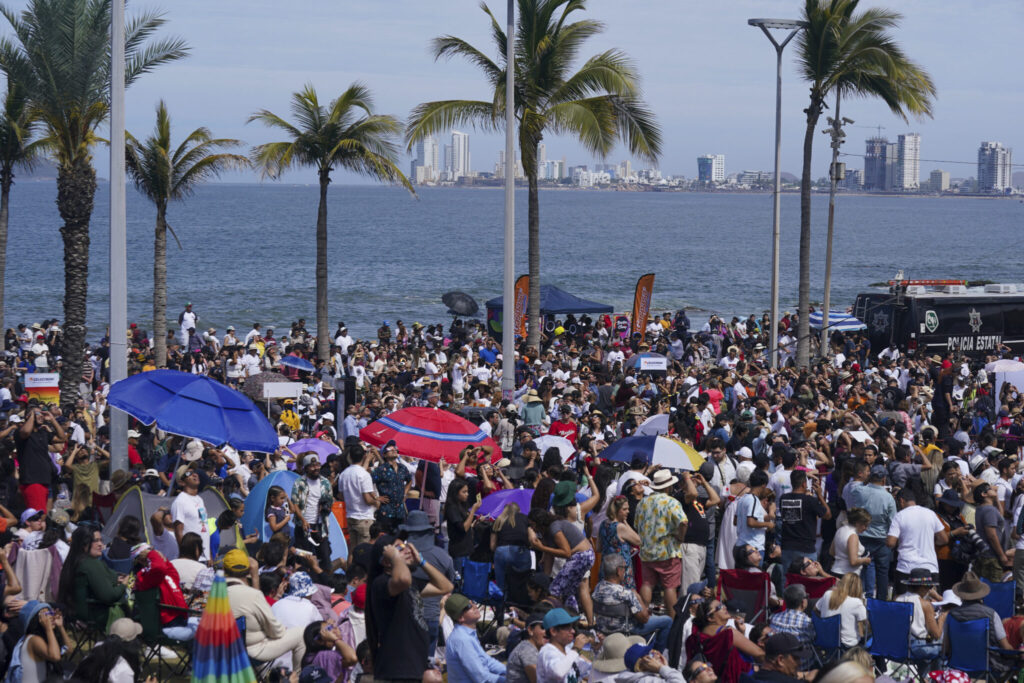
Palm trees were silhouetted against a faint glow near the horizon like one of the resort’s famous sunsets, but coming before noon.
Karen Ibarra, of Colombia, is a researcher at Mexico’s National Autonomous University. She came to Mazatlan for the eclipse.
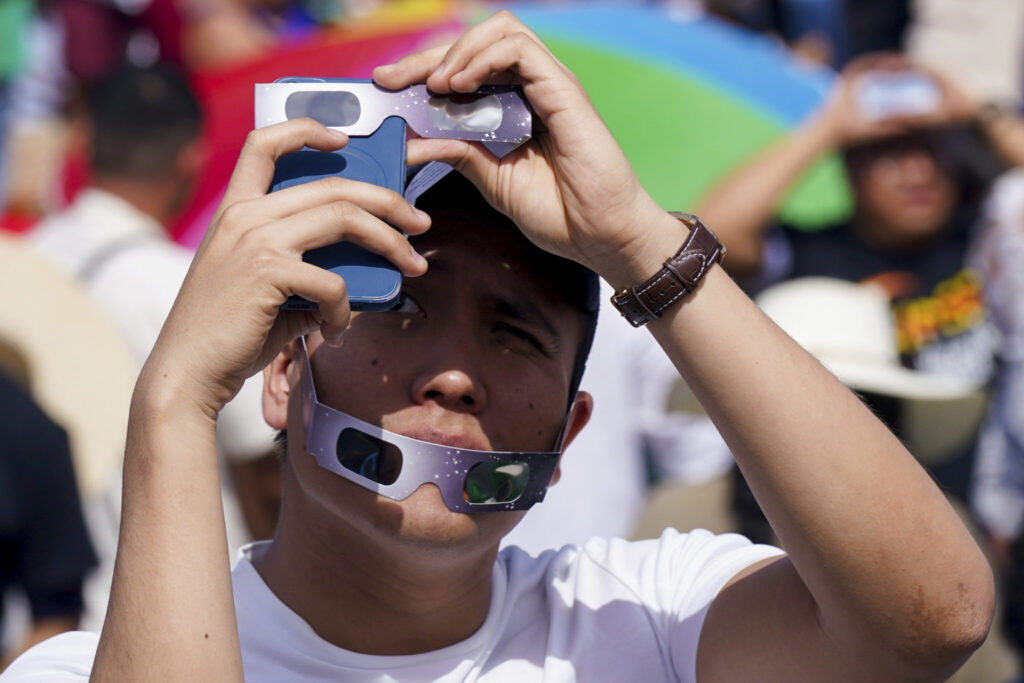
As darkness blanketed the coast she said, “seeing the corona is the best.”

